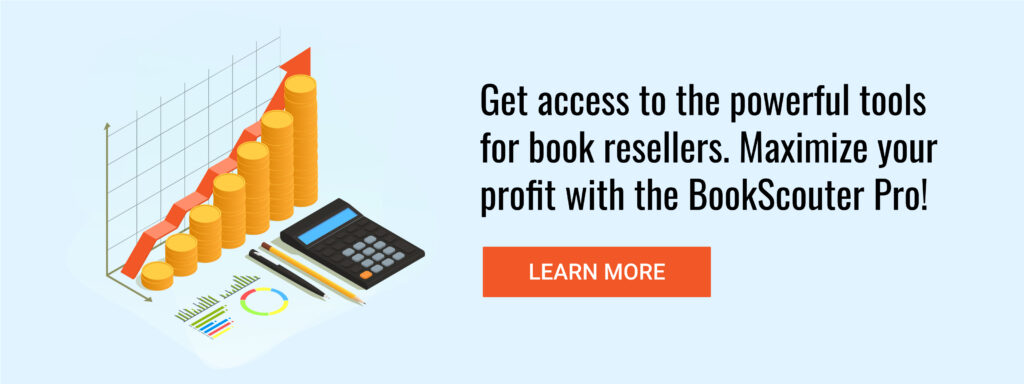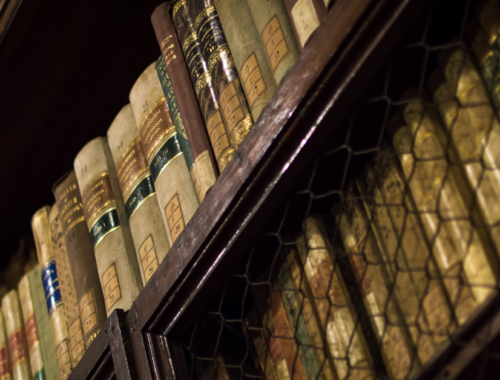
There’s plenty of information about listing and selling regular ISBN-13 books. However, what about the books that don’t have an ISBN? How do you deal with them? For one thing, such old books may not have any value; for another, some out-of-print books can be rare collectibles you can sell quite profitably. Therefore, knowing how to find and evaluate as well as where to sell books from the pre-ISBN era is an advantage you can use as a bookseller.
- What are Pre-ISBN Era Books?
- What Do Pre-ISBN Era Books Look Like?
- How to Understand the Value of a Book with No ISBN?
- How to Deal with Pre-ISBN Era Books?
- What to Do When You Learned Your No-ISBN-Book’s Value?
- How to Buy Pre-ISBN Era Books?
- How to List and Sell Pre-ISBN Era Books?
- Where to Find Bookstores Specializing in Pre-ISBN and Antique Books?
- Can I Sell Pre-ISBN Era Books on Amazon?
- How to Sell Pre-ISBN Era Books on eBay?
1. What are Pre-ISBN Era Books?
As you probably know quite well, ISBNs were first conceptualized in the 1960s. However, they only became widely used in the 1970s. The first ISBNs had nine digits; the ISBNs of the 70s had ten digits, and, in 2007, the 13-digit ISBN format was accepted worldwide to facilitate the commercialization of books.
Books that were printed before the 1970s are usually referred to as pre-ISBN era books. You can check whether your book is one by looking at its spine and cover: books that pre-date the ISBN system have no ISBN number or a barcode.
2. What Do Pre-ISBN Era Books Look Like?
Pre-ISBN books usually look like, well, old books—hardbacks and paperbacks. Depending on their history and storage conditions, they can be in Acceptable to Good condition. Here’s an example of the Scrambled Eggs Super! (Book Club Edition, pre-ISBN era) listing from Biblio:
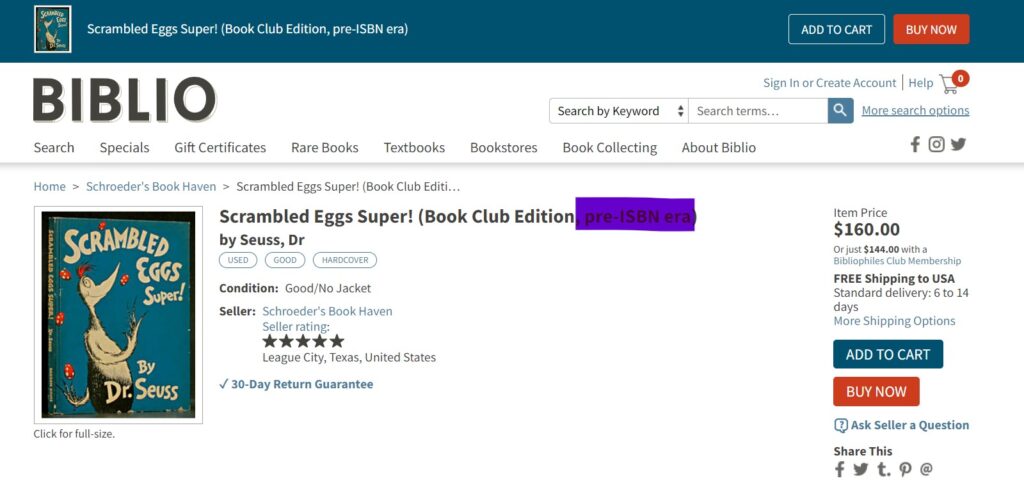
Another example is Mencius (UNESCO Collectio of Representative Works – Chinese Series):
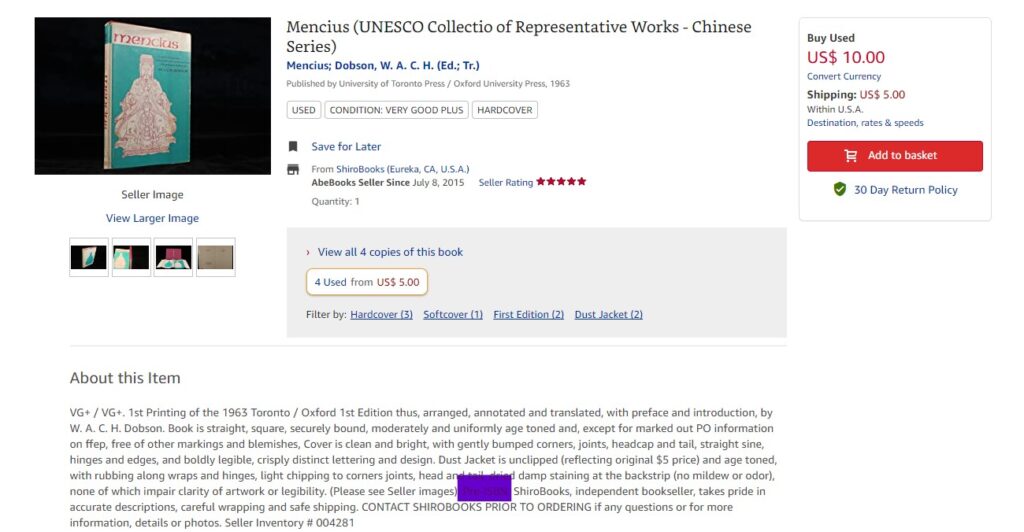
3. How to Understand the Value of a Book with No ISBN?
Identify Your Book
Before the ISBN system was introduced and formalized in 1970, book identification was based on other information. Here’s what you can check now to understand the value of a book:
- Make a note of whether it’s a paperback or hardcover.
- Most likely, you’ll be looking for the book by its title and author, so check this information first.
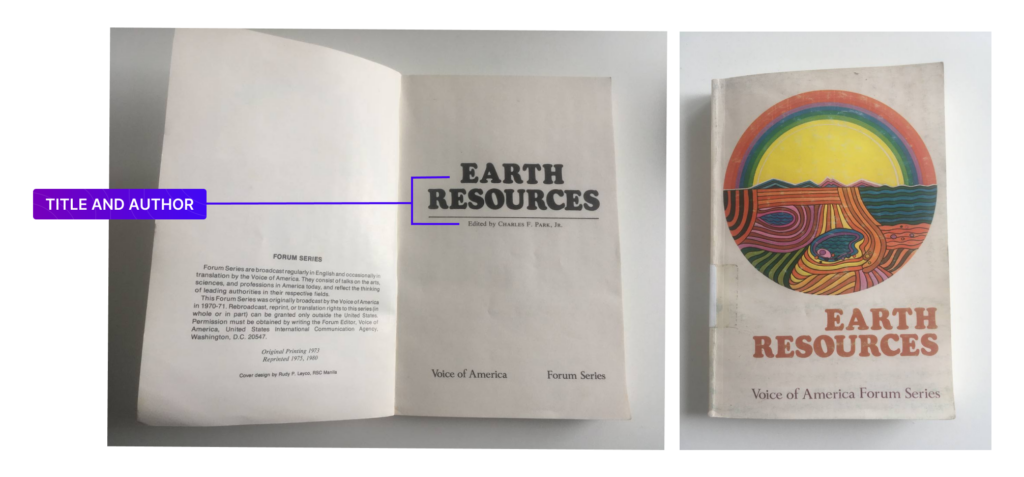
- Then, also check the illustrator information (if applicable). While this is optional, having more information is always an advantage.
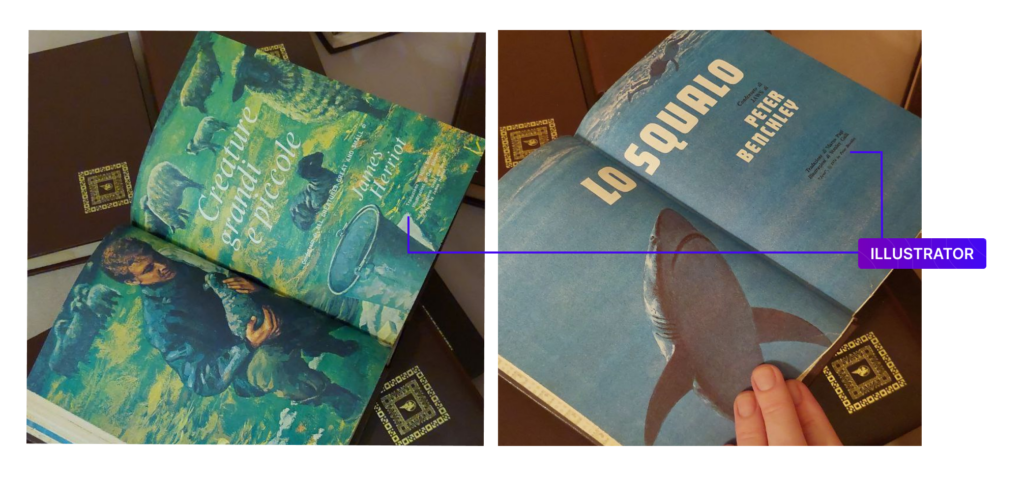
- Find the name of the publisher.
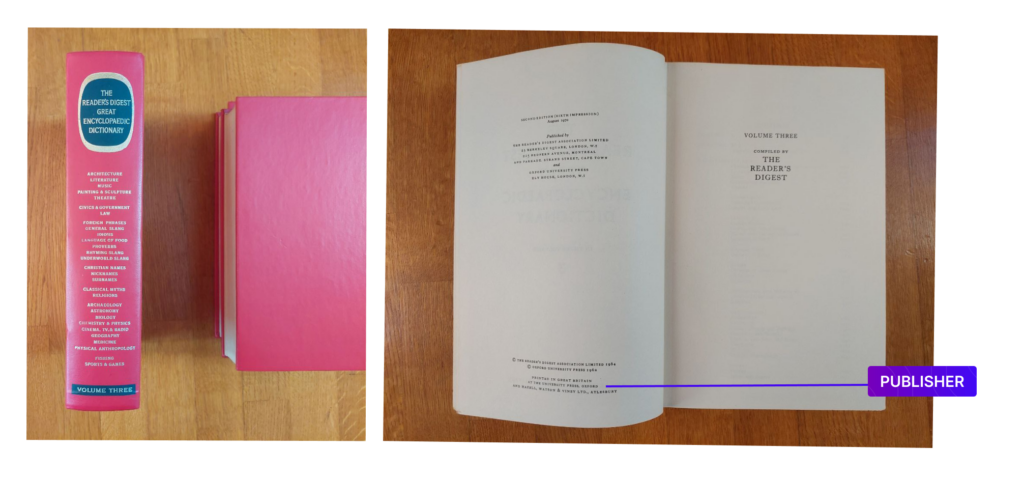
- Find the publishing date (check the copyright page; in most instances, you’ll find it there if it’s nowhere else to be seen).
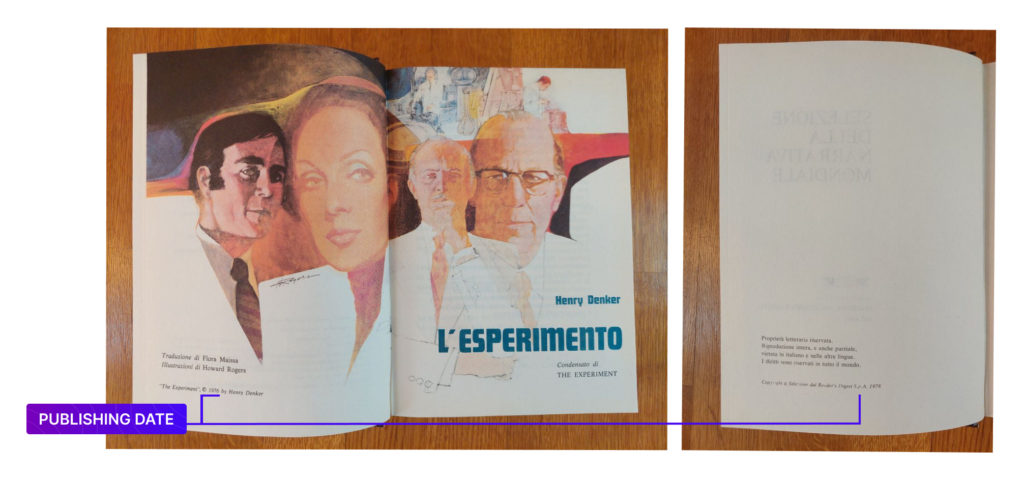
- Find the information about the book‘s edition; pay special attention to first editions (they’re usually valuable and can be quite expensive, depending on the book in question).
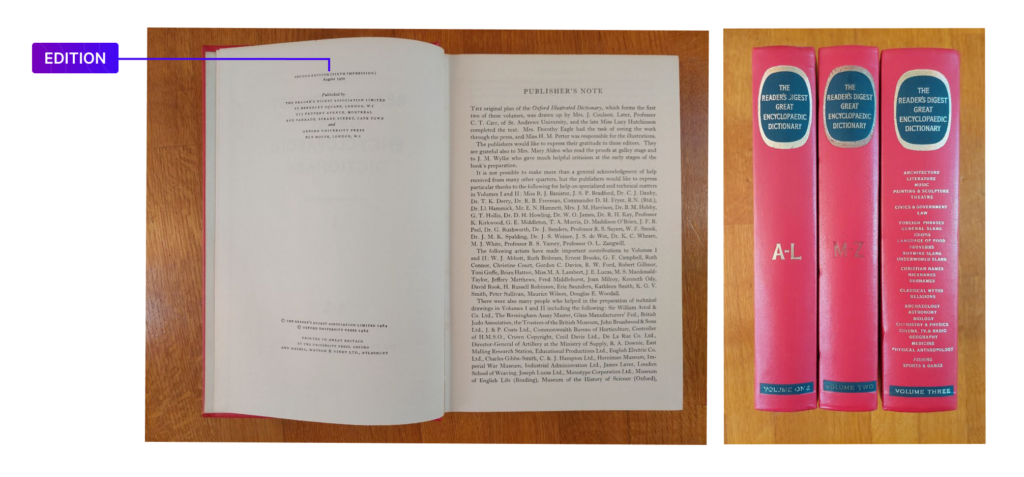
- Check the book for any signatures or inscriptions (depending on the case, they may add or reduce the book’s value).
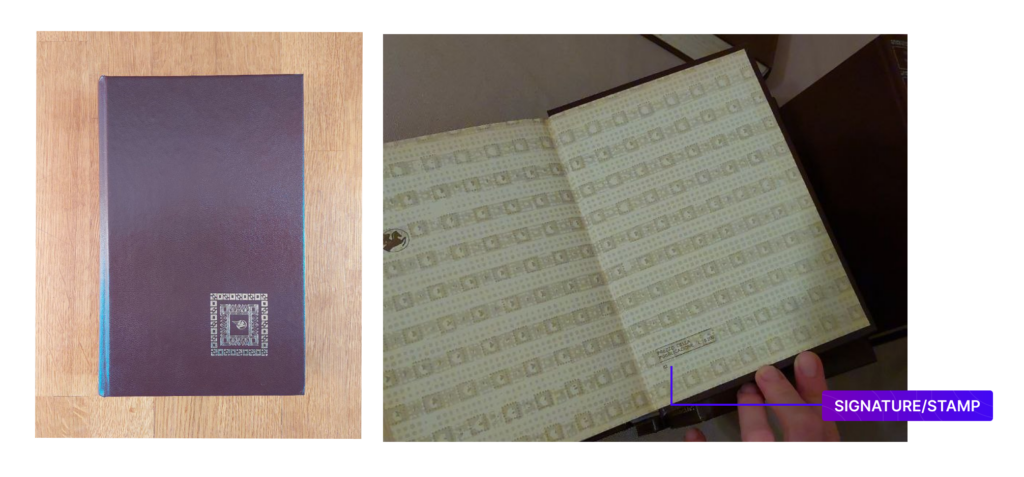
Determine Its Condition
The next step is to determine your book’s condition (feel free to read our article on Determining Book Condition Guide):
- Check it for any signs of damage: water damage, stains, yellowing, creases, tears, signs of shelf wear, etc.
- Check for present or removed price (or other) stickers.
- Look closely at the binding and the spine; note if there’re any defects.
- Examine the book closely inside: any signs of markings, notes, writing on margins, etc.
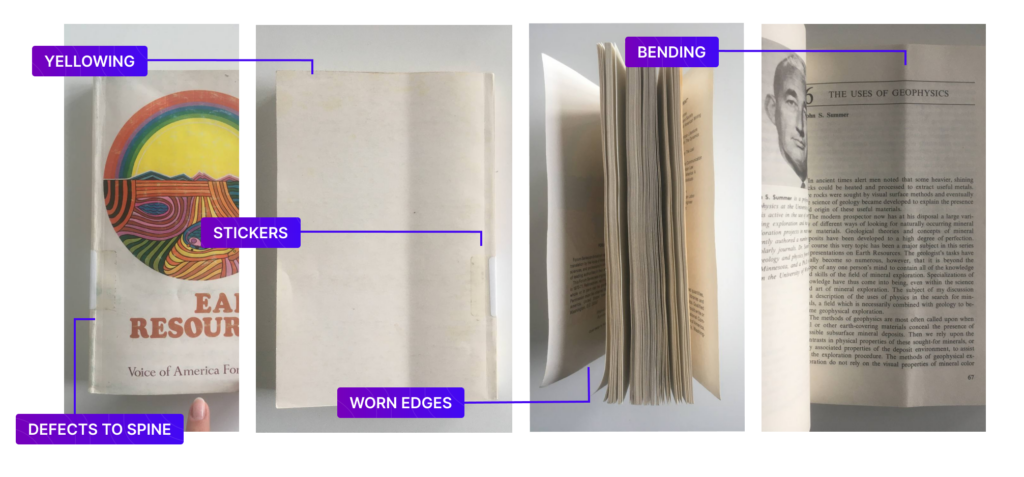
Find Your Book’s Value
Now that you’ve got all the information, you can try checking online bookselling marketplaces to understand the value of your book. Among the most probable places you’ll be cross-checking are:
On some of them, it’ll be easier to find an exact match by author, while on others—by title. The information about the edition, publisher, binding, condition, and other identifiers will also help you better understand the value of your book (we also previously prepared a detailed guide on How To Find The Value Of Old Books).
You may be lucky to find the exact match at once. However, in most cases, your best bet is to check for copies or similar titles and cross-check their prices to understand how much your book is worth.
4. How to Deal with Pre-ISBN Era Books?
Understanding the value of pre-ISBN books is not always easy. After all, there’re books that can be interesting from a collector’s point of view, and there’re just old books, poorly made softcovers. So, here’s a piece of advice from one of the booksellers on Amazon regarding the “value of books with no barcode” you can follow:
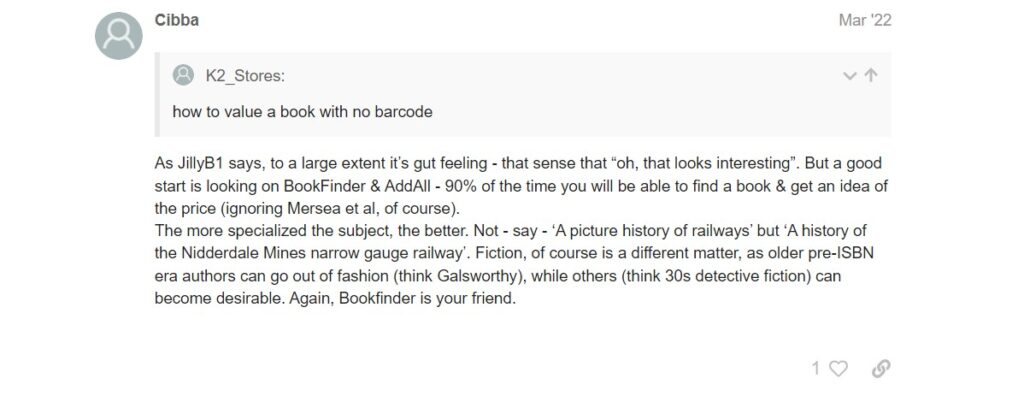
5. What to Do When You Learned Your No-ISBN-Book’s Value?
A good question. If you suspect that your book might be not just valuable but some rare collectible, for instance, you can:
- Contact a professional appraiser. It’s a clever idea, even if you don’t plan to sell the book just yet. To find a specialist, you can check The Antiquarian Booksellers’ Association of America, American Society of Appraisers, Appraisers’ Association of America, or International Society of Appraisers’websites.
- Sell the book to a dealer. Mind that you can get less than market value, though.
- Sell the book at auction. Rare and antique books can be sold at Sotheby’s and Heritage Auctions, to name a few. While you have to pay for the appraisal, you also have a higher chance of getting a proper valuation and the highest price.
- Sell the book online. There’re online bookselling marketplaces that deal with pre-ISBN books, too. We’ve mentioned some of them already, and we’ll focus on a few more in detail later.
6. How to Buy Pre-ISBN Era Books?
Pretty much like any other book, but you should know the places. Most online booksellers prefer not to deal with books that don’t have ISBNs, so if you’re looking for books with no barcodes or ISBNs online, check these websites first:
7. How to List and Sell Pre-ISBN Era Books?
Listing a pre-ISBN book for sale may not be an easy task. As we’ve already said, not every bookseller accepts them; not every marketplace has functionality for listing such books. Here’s an example from the BookDeal’s Book Acceptance Guidelines:

So, yet again, for books that might come as rare or collectibles, you can check Bauman Rare Books or Peter Harrington books, as well as AbeBooks and Biblio. Here’s the information you must provide about your pre-ISBN title to present it to Peter Harrington for valuation:
“In every case, we need to know:
- The author’s name
- The title exactly as it appears on the printed title-page (inside the book, not on the front cover)
- Edition number if stated
- The place of publication, name of the publisher, and date if any
- The binding (leather, boards, cloth, dust jacket, etc.)
- Any major defects (torn leaves, stains, broken joints, etc.)
We will need to see at least two photographs of each item: the printed title page and the binding.”
All in all, they’ll request the information we’ve already mentioned earlier.
Here’s an example of a listing page from the Biblio’s seller account:
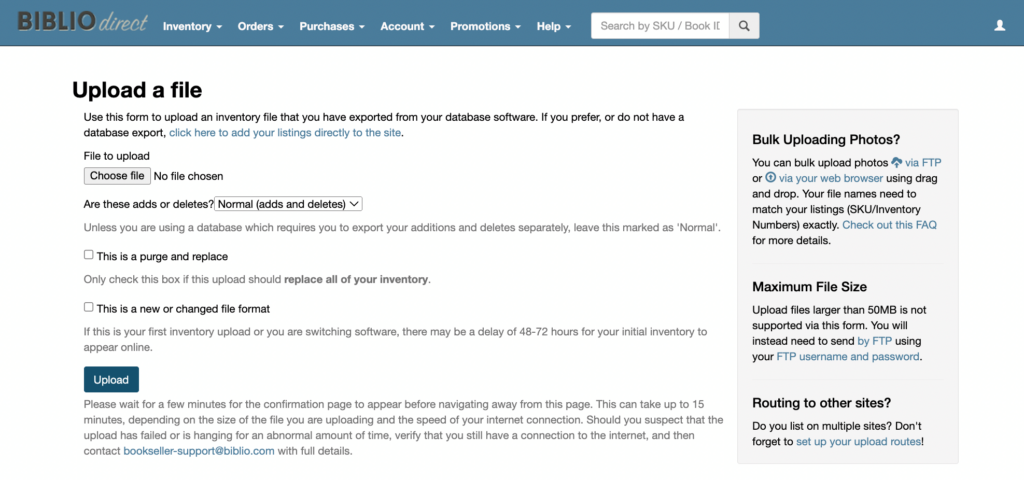
Most booksellers use bulk upload; however, in the case of pre-ISBN titles, you should use the “click here to add your listings directly to the site” link and enter the details manually.
To understand the value of a book before listing it, you can check it on Addall. For instance, let’s check the book we featured earlier Earth Resources Voice of America Forum Series. After entering the title and publishing year in the search fields, we can see two similar results and their approximate price offers:

8. Where to Find Bookstores Specializing in Pre-ISBN and Antique Books?
We’ve already mentioned online booksellers that deal with pre-ISBN books. Among them, AbeBooks, Addall, and Biblio are the most popular. However, there’re other resources. Smaller and less well-known booksellers work with pre-ISBN and antique books.
Where to Sell Pre-ISBN Era Books?
One of the places you can check is The Penguin Chap, a bookseller focusing on old and out-of-print items. Here’s what they’re looking for, “I am chiefly interested in 1st editions published by Penguin and Puffin (and various imprints such as Peacock, King Penguin, etc.) from 1935-1970 (pre-ISBN era) in good, saleable condition.”
Symposium Books, an independent family bookstore on Rhode Island, specializes in books and vinyl records, and they’re specifically interested in “Pre-ISBN only, reasonably well-known authors and titles (e.g., George Orwell, Aldous Huxley, Albert Camus, Lord of the Flies, 1984, Little Prince). Condition isn’t critical. We understand they were inexpensively made back in the day.”
One of the ways to find a local bookstore specializing in pre-ISBN books is by checking the list of Biblio bookstores. They boast hosting “7,000 of the finest online bookstores and booksellers,” including those dealing with pre-ISBN books. To find the bookstores, look at the PRE-ISBN tag:
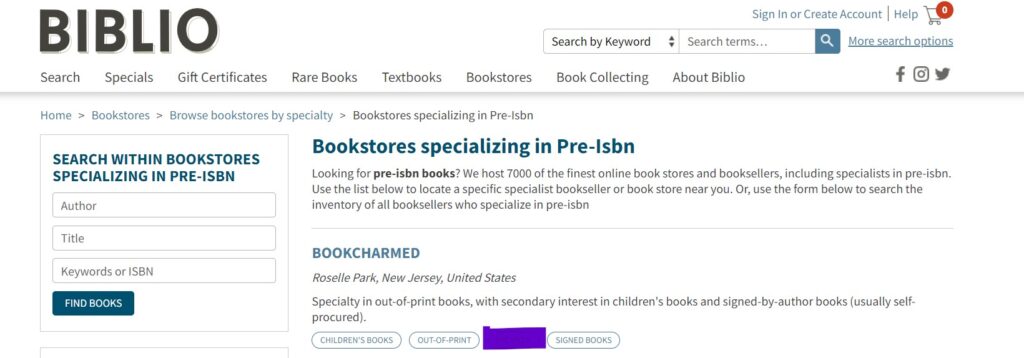
To find out more useful information on the topic, you can read our article about Where To Sell Antique Books & Rare Books.
9. Can I Sell Pre-ISBN Era Books on Amazon?
If you’ve tried to research the topic of selling pre-ISBN books on Amazon, you’ve probably seen similar questions:

As we’ve made it clear in the course of the article, books published before the 70s and even in the early days of ISBN use don’t have this identifier. So, with Amazon, you have to apply for an Amazon ISBN exemption.
In our research on the pre-ISBN book listing and selling, we’ve concluded that due to the often counterintuitive nature of the Amazon search and listing process, it’s quite difficult to deal with such titles.
According to the sellers’ reviews, you have to apply for an exemption every time you want to list a book without an ISBN. Most of these reviews recommend going to eBay instead, as Amazon makes it hard (not impossible, but hard, especially if you sell in bulk) to sell pre-ISBN books.
10. How to Sell Pre-ISBN Era Books on eBay?
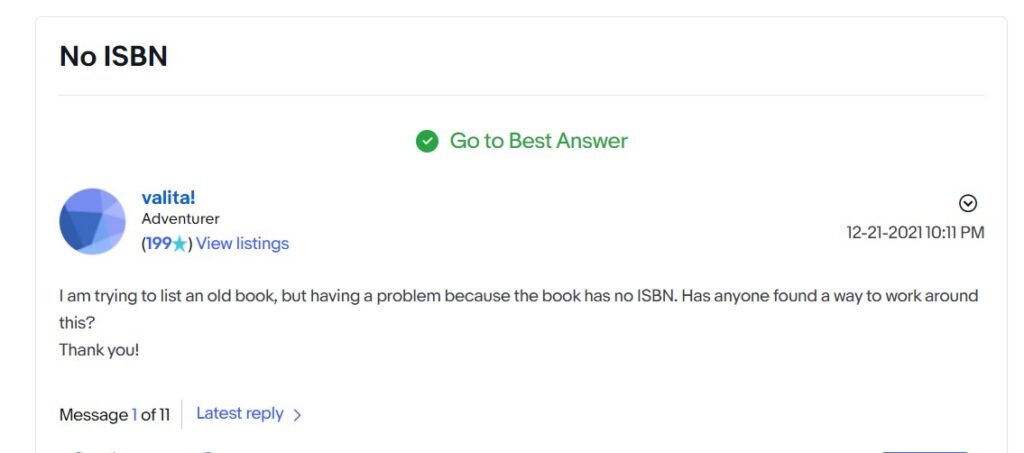
Here’s what eBay Community recommends on pre-ISBN listings:
“It’s an old book, you can list under antiquarian books which you can leave the ISBN section blank.”
“Just put in N/A and keep moving.”
“use Does Not Apply”
Judging by the answers and the number of books from the pre-ISBN era on the platform, eBay is definitely a better place to sell such books.
Conclusion
We hope that this question and answers series shed some light on the topic of pre-ISBN books, even if you’re a seasoned bookseller who happened to deal with such titles. We also hope that it’ll be useful to everyone interested in the topic of bookselling and publishing.
If you’re looking to sell books that have an ISBN but don’t know where to start, you might find helpful the following articles: Book Databases Overview, How To Make Money Selling Books, How to Sell Used Books with Maximum Profit, Top 5 Best Websites to Sell Books.


